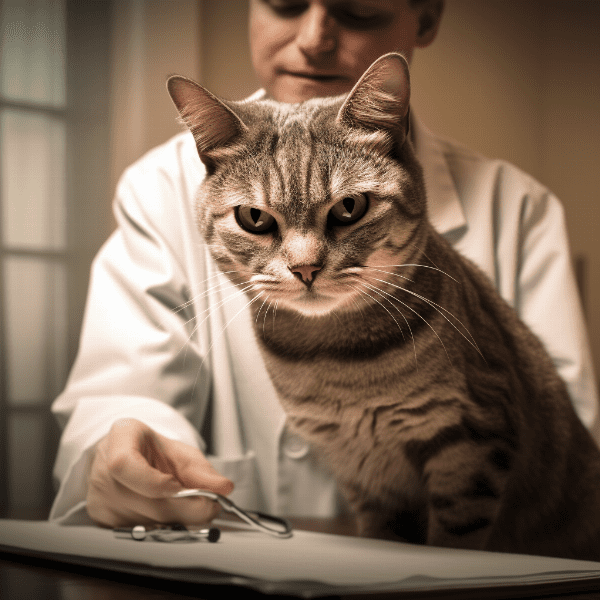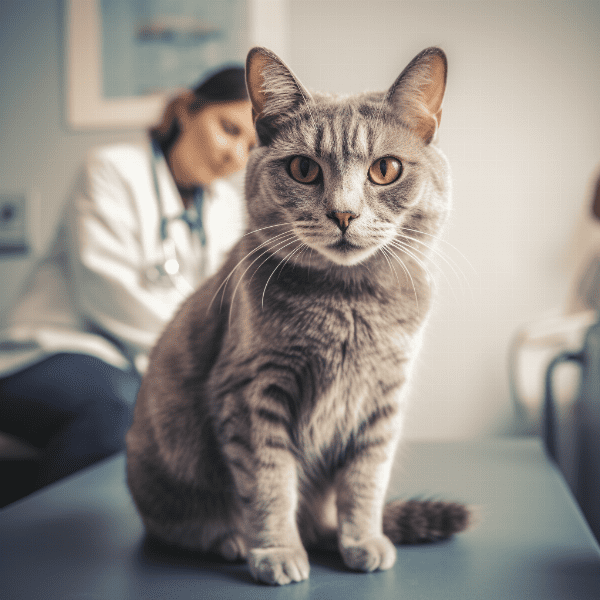Table of Contents
- Understanding Mammary Cancer in Cats
- Recognizing the Signs and Symptoms
- Diagnosis of Mammary Cancer in Cats
- Staging of Mammary Cancer in Cats
- Treatment Options for Mammary Cancer in Cats
- Surgery for Mammary Cancer in Cats
- Chemotherapy for Mammary Cancer in Cats
- Radiation Therapy for Mammary Cancer in Cats
- Palliative Care for Mammary Cancer in Cats
- Preventing Mammary Cancer in Cats
Understanding Mammary Cancer in Cats
Mammary cancer, also known as breast cancer, is a type of cancer that occurs in the mammary glands of cats. It is the third most common type of cancer in cats, and it is more likely to affect female cats that are not spayed.
How does Mammary Cancer Develop in Cats?
Mammary cancer in cats usually develops in the mammary glands, which are responsible for producing milk. The development of mammary cancer in cats can be influenced by various factors, including hormonal changes, genetics, and environmental factors.
What are the Risk Factors for Mammary Cancer in Cats?
The risk factors for mammary cancer in cats include age, gender, reproductive status, obesity, exposure to certain hormones, and exposure to environmental toxins. Female cats that are not spayed and are over the age of 10 are at the highest risk of developing mammary cancer.
What are the Different Types of Mammary Cancer in Cats?
Mammary cancer in cats can be classified into two types: malignant and benign. Malignant mammary tumors are cancerous and can spread to other parts of the body, while benign tumors are non-cancerous and do not spread to other parts of the body.
What are the Signs and Symptoms of Mammary Cancer in Cats?
The signs and symptoms of mammary cancer in cats include lumps or bumps in the mammary glands, swelling, redness, discharge from the nipples, and changes in the appearance of the nipples. It is important to note that mammary cancer in cats can sometimes be asymptomatic, which is why regular check-ups with a veterinarian are crucial.
In conclusion, understanding mammary cancer in cats is the first step towards prevention and early detection. It is important to keep an eye out for any changes in your cat’s mammary glands and to consult with a veterinarian if you notice any unusual signs or symptoms.

Recognizing the Signs and Symptoms
Early detection of mammary cancer in cats is crucial for successful treatment outcomes. As a cat owner, it is important to be aware of the signs and symptoms of mammary cancer in cats.
Physical Signs and Symptoms
The most common sign of mammary cancer in cats is the presence of lumps or bumps in the mammary glands. These lumps or bumps may feel hard or irregular in shape, and they may be located anywhere along the cat’s belly or chest area. Other physical signs and symptoms of mammary cancer in cats include:
- Swelling or inflammation of the mammary glands
- Redness or discoloration of the skin around the mammary glands
- Discharge from the nipples, which may be bloody or clear in color
- Changes in the appearance or shape of the nipples, including enlargement or flattening
Behavioral Signs and Symptoms
In addition to physical signs and symptoms, mammary cancer in cats can also cause changes in their behavior. Some common behavioral signs and symptoms of mammary cancer in cats include:
- Loss of appetite or weight loss
- Lethargy or decreased activity levels
- Unusual vocalization or meowing
- Hiding or avoidance of human interaction
It is important to note that not all cats with mammary cancer will exhibit all of these signs and symptoms. In some cases, mammary cancer may be asymptomatic and go unnoticed until it reaches an advanced stage. Regular check-ups with a veterinarian are crucial for early detection and treatment of mammary cancer in cats.
In conclusion, recognizing the signs and symptoms of mammary cancer in cats is crucial for early detection and successful treatment outcomes. If you notice any unusual changes in your cat’s behavior or physical appearance, it is important to consult with a veterinarian as soon as possible.

Diagnosis of Mammary Cancer in Cats
If you suspect that your cat may have mammary cancer, it is important to seek veterinary care as soon as possible. The diagnostic process for mammary cancer in cats typically involves a combination of physical exams, imaging tests, and biopsies.
Physical Exam
During a physical exam, a veterinarian will conduct a thorough examination of your cat’s mammary glands, looking for any lumps or abnormalities. They will also examine your cat’s overall health, including their weight, appetite, and behavior.
Imaging Tests
Imaging tests, such as X-rays, ultrasounds, or MRIs, may be used to determine the size and location of any tumors in your cat’s mammary glands. These tests can also help determine if the cancer has spread to other parts of the body, such as the lungs or lymph nodes.
Biopsies
A biopsy involves the removal of a small sample of tissue from the affected area, which is then examined under a microscope for the presence of cancerous cells. There are several types of biopsies that may be used to diagnose mammary cancer in cats, including fine needle aspirates, core needle biopsies, and surgical biopsies.
Staging
Once a diagnosis of mammary cancer has been confirmed, your veterinarian will work to determine the stage of the cancer. Staging involves determining the size and location of the tumor, as well as whether the cancer has spread to other parts of the body. Staging is important for determining the best course of treatment for your cat.
In conclusion, the diagnosis of mammary cancer in cats involves a combination of physical exams, imaging tests, and biopsies. Early detection and diagnosis are crucial for successful treatment outcomes, so if you suspect that your cat may have mammary cancer, it is important to seek veterinary care as soon as possible.
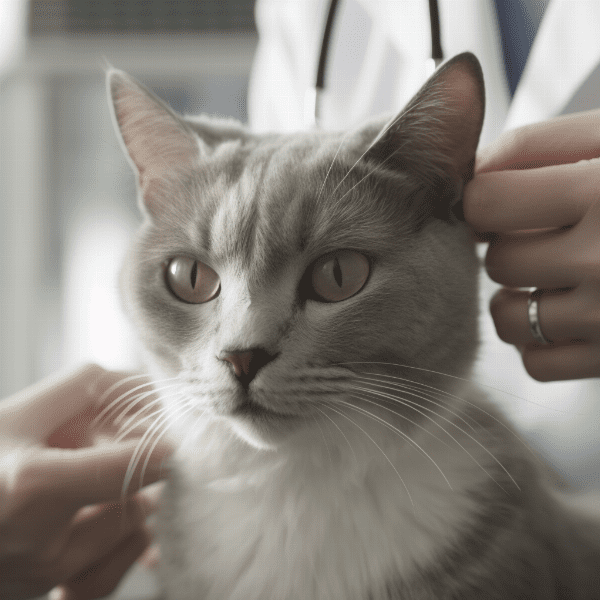
Staging of Mammary Cancer in Cats
Staging is the process of determining the extent and severity of the cancer. For mammary cancer in cats, staging is important for determining the best course of treatment and predicting the prognosis of the disease.
Stage 3
Stage 3 mammary cancer in cats is characterized by the presence of one or more tumors that have spread to nearby lymph nodes and other parts of the body, such as the lungs.
Stage 4
Stage 4 mammary cancer in cats is the most advanced stage of the disease, and is characterized by the presence of tumors that have spread to distant organs, such as the liver or bones.
Staging mammary cancer in cats typically involves a combination of physical exams, imaging tests, and biopsies. Once the stage of the cancer has been determined, your veterinarian will work with you to develop a treatment plan that is tailored to your cat’s individual needs.
In conclusion, staging is an important aspect of the diagnostic process for mammary cancer in cats. By determining the stage of the cancer, veterinarians can develop a treatment plan that is tailored to the individual needs of the cat, and predict the prognosis of the disease.

Treatment Options for Mammary Cancer in Cats
The treatment options for mammary cancer in cats depend on several factors, including the stage of the cancer, the location and size of the tumors, and the overall health of the cat. Treatment options for mammary cancer in cats may include surgery, chemotherapy, radiation therapy, and palliative care.
Surgery
Surgery is the most common treatment option for mammary cancer in cats. During surgery, the affected mammary gland or glands will be removed. In some cases, nearby lymph nodes may also be removed to prevent the cancer from spreading. Surgery is most effective for treating early-stage mammary cancer in cats.
Chemotherapy
Chemotherapy involves the use of drugs to kill cancer cells. Chemotherapy may be used as a primary treatment for advanced-stage mammary cancer in cats, or as an adjuvant therapy following surgery. The use of chemotherapy in cats is less common than in humans, and the side effects can be more severe due to the higher dose needed relative to their body size.
Palliative Care
Palliative care involves the management of symptoms and discomfort associated with advanced-stage mammary cancer in cats. This can include pain management, nutritional support, and other supportive care measures to improve quality of life.
In conclusion, treatment options for mammary cancer in cats depend on several factors, including the stage of the cancer, the location and size of the tumors, and the overall health of the cat. Surgery is the most common treatment option, but chemotherapy, radiation therapy, and palliative care may also be used depending on the individual cat’s needs. It is important to work closely with your veterinarian to determine the best treatment plan for your cat.
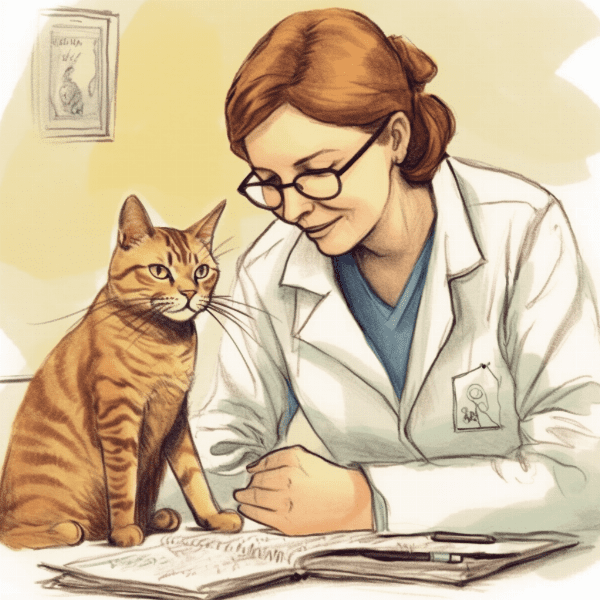
Surgery for Mammary Cancer in Cats
Surgery is the most common treatment option for mammary cancer in cats, and it can be curative if the cancer is detected early. Surgery involves the removal of the affected mammary gland or glands, as well as any nearby lymph nodes that may be affected.
Preoperative Evaluation
Prior to surgery, your veterinarian will conduct a thorough physical examination, blood tests, and imaging studies to determine the extent and severity of the cancer. This will help determine whether surgery is the best option for your cat.
Anesthesia
Surgery for mammary cancer in cats requires general anesthesia. Your veterinarian will carefully monitor your cat’s vital signs during the surgery to ensure their safety and comfort.
Surgical Procedure
During the surgery, the affected mammary gland or glands will be removed, along with any nearby lymph nodes. The incision will then be closed with sutures or surgical staples. In some cases, drains may be placed to help remove excess fluid from the surgical site.
Postoperative Care
After surgery, your cat will need to be closely monitored to ensure that they are recovering properly. Your veterinarian may prescribe pain medications or antibiotics to help manage pain and prevent infection. You may also need to limit your cat’s activity level for several weeks following surgery to allow for proper healing.
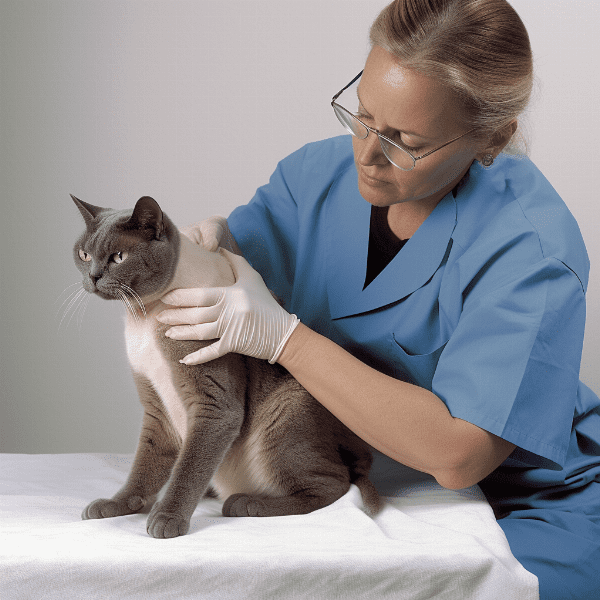
Chemotherapy for Mammary Cancer in Cats
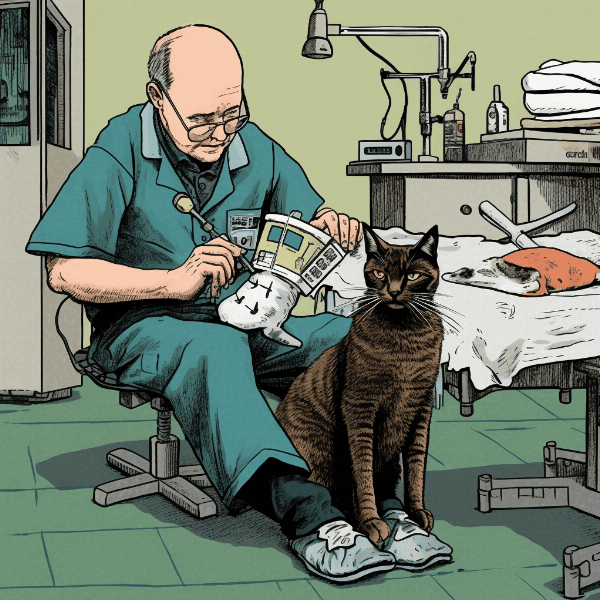
Radiation Therapy for Mammary Cancer in Cats
Radiation therapy is a treatment option for mammary cancer in cats that involves the use of high-energy radiation to kill cancer cells. Radiation therapy may be used as a primary treatment for early-stage mammary cancer, or as an adjuvant therapy following surgery.
Administration
Radiation therapy for mammary cancer in cats is usually administered over several weeks, with daily treatments given on weekdays. The treatment schedule and duration will depend on the type and stage of the cancer, as well as the individual cat’s response to treatment.
Side Effects
Radiation therapy can have side effects, including skin irritation and damage to healthy tissues. However, these side effects are typically mild and short-lived, and can be managed with medications and supportive care.
Monitoring
Cats receiving radiation therapy will need to be closely monitored by a veterinarian to ensure that they are responding to treatment and to manage any side effects. Imaging studies and blood tests may be conducted to assess the cat’s response to treatment and to detect any signs of cancer recurrence.
Prognosis
The prognosis for cats undergoing radiation therapy for mammary cancer can vary depending on the stage and type of the cancer, as well as the individual cat’s response to treatment. Some cats may experience a complete remission of the cancer, while others may experience a partial remission or no response to treatment.
In conclusion, radiation therapy is a treatment option for mammary cancer in cats that can be effective in managing the disease and improving quality of life. It is important to work closely with a veterinarian to determine the best treatment plan for your cat, and to monitor their response to treatment closely.

Palliative Care for Mammary Cancer in Cats
Palliative care is a treatment option for cats with advanced-stage mammary cancer that focuses on managing symptoms and improving quality of life. Palliative care may involve pain management, nutritional support, and other supportive care measures.
Pain Management
Pain is a common symptom of advanced-stage mammary cancer in cats. Pain management may involve the use of medications, such as non-steroidal anti-inflammatory drugs (NSAIDs) or opioids, to manage pain and improve quality of life.
Nutritional Support
Cats with advanced-stage mammary cancer may experience a loss of appetite or difficulty eating. Nutritional support may involve the use of specialized diets or appetite stimulants to ensure that the cat is receiving adequate nutrition.
Other Supportive Care Measures
Other supportive care measures for cats with advanced-stage mammary cancer may include environmental modifications, such as providing soft bedding and easy access to food and water, as well as emotional support for both the cat and the owner.
Prognosis
The prognosis for cats with advanced-stage mammary cancer can vary depending on the extent and severity of the cancer, as well as the individual cat’s response to treatment. Palliative care can improve quality of life and provide comfort for cats with advanced-stage mammary cancer.
In conclusion, palliative care is an important treatment option for cats with advanced-stage mammary cancer. It focuses on managing symptoms and improving quality of life, and can provide comfort and support for both the cat and the owner. It is important to work closely with a veterinarian to determine the best palliative care plan for your cat.

Preventing Mammary Cancer in Cats
While it may not be possible to completely prevent mammary cancer in cats, there are several steps that can be taken to reduce the risk of developing the disease.
Spaying
Spaying your female cat before their first heat cycle can significantly reduce their risk of developing mammary cancer. The risk decreases with each subsequent heat cycle the cat goes through.
Healthy Diet and Exercise
Maintaining a healthy diet and providing regular exercise can help reduce the risk of developing mammary cancer in cats. A healthy weight and good overall health can help boost the immune system and reduce the risk of developing cancer.
Regular Veterinary Checkups
Regular veterinary checkups can help detect mammary cancer in cats early, when treatment is most effective. It is important to schedule routine checkups with your veterinarian and to monitor your cat for any signs of illness or abnormal behavior.
Limit Exposure to Toxins
Exposure to toxins, such as tobacco smoke and pesticides, has been linked to an increased risk of developing mammary cancer in cats. It is important to limit your cat’s exposure to these toxins whenever possible.
In conclusion, while it may not be possible to completely prevent mammary cancer in cats, there are several steps that can be taken to reduce the risk of developing the disease. Spaying, maintaining a healthy diet and exercise routine, regular veterinary checkups, and limiting exposure to toxins can all help reduce the risk of developing mammary cancer in cats.


